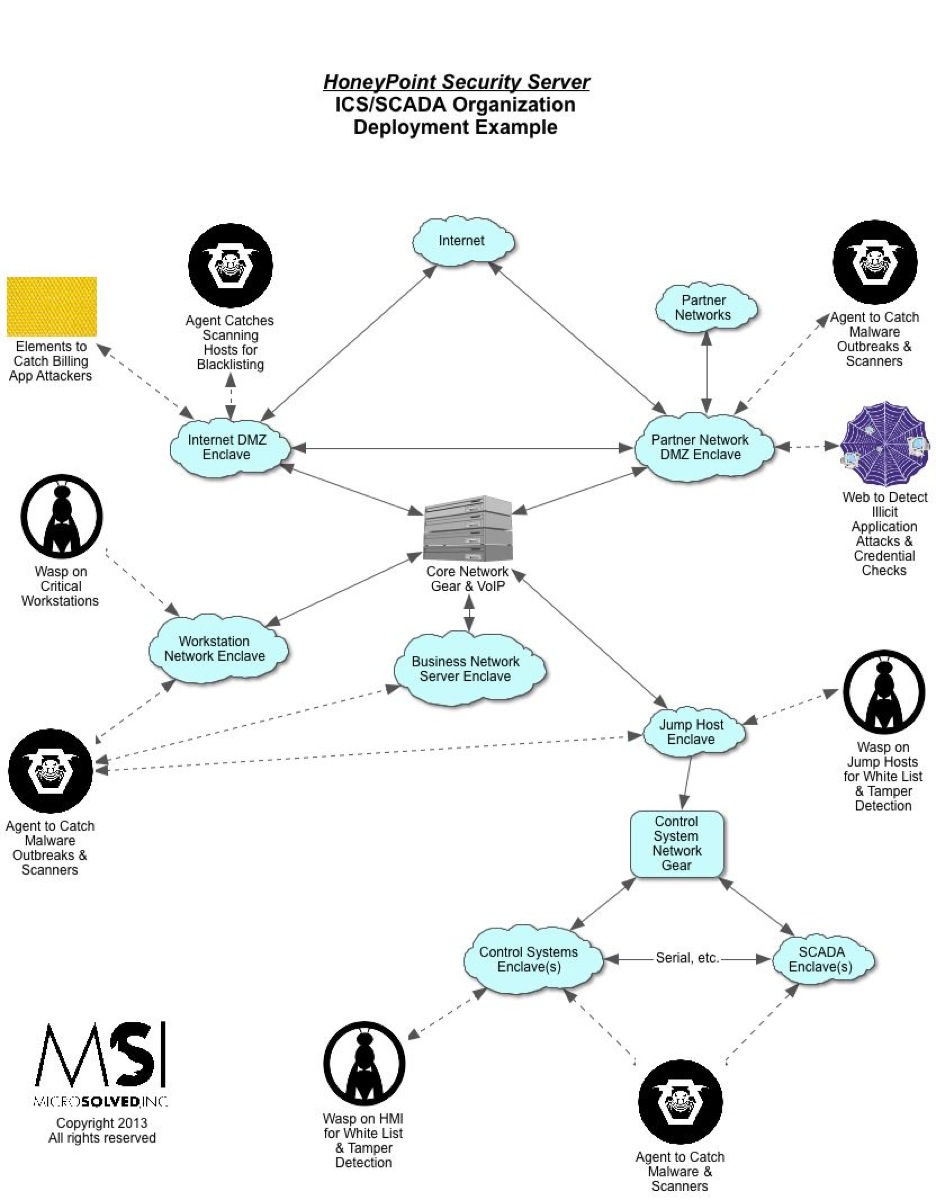Recently, I got to spend some time interviewing Chris Jager via email on industrial control systems security. He didn’t pull any punches and neither did I. Here, are 3 Tough Questions between myself (@lbhuston) and Chris.
A Short Biography of Chris Jager (@chrisjager): I have over 15 years of experience in Information Technology and have focused on the practical application of security principles throughout my career. Most recently, I was director of the NESCO Tactical Analysis Center at EnergySec; a non-profit organization formed to facilitate information sharing, situational awareness, and education outreach to the energy sector. I am active in a number of information security workgroups and have provided operational, architectural, and regulatory compliance guidance to large and small organizations in both the public and private sectors, focusing on the energy sector exclusively since 2006.
Brent: You have spent a lot of time working on Industrial Control Systems (ICS) in your career. During that time, you have been witness to the explosion of interest in IT security as a profession. Why should some of the younger folks thinking about information security as a career consider a focus on ICS and SCADA? Why should they care?
Mr. Jager: This is a fantastic question and, if I frame my response correctly, the answer will hopefully be self-evident to your readers.
ICS and SCADA are terms that are seldom understood and often misused by information security (infosec) publications. SCADA systems typically manage geographically disperse areas and often consist of numerous functionally disparate processes.
However, because of the immense variety of different processes that can be managed by industrial control systems, ICS has become somewhat of a catchall term – including SCADA systems. For example, you’ll often find electric power generation processes such as turbine control, burner management, vibration monitoring and more lumped into the mix. Each of these processes has discrete or locally distributed control and instrumentation systems, any of which can cause catastrophic safety, reliability, and financial issues if misused.
For me, the challenge of protecting these kinds of systems is far more interesting than making sure that little Bobby can’t drop the student records table in a classroom database. Much of the actual management technology is the same as what is used in general IT, but the application is very different. Things get a little more exotic (and arcane) when you go further down the stack into digital–to-analog conversion, but it’s not overly difficult for most folks to understand once exposed to it. The negative impacts of misuse aren’t limited to convenience and financial loss. Risk to life and limb is a very real possibility in many processes that are managed by industrial control system automation that is being run out of specification.
Typically, industrial control systems are deployed in step with the physical equipment they are designed to manage. The physical equipment is often orders of magnitude more expensive than the ICS components that ship with it and may be designed for lifespans measured in decades. In short, upgrades seldom occur as they need to be engineered and tested for functionality, safety, and a myriad of other issues pertaining to the existing physical equipment.
This has led to a situation where the groups that understand control systems and processes are naturally (and often generationally) gapped from those groups who understand the current threat and vulnerability landscapes. Consequently, there are currently very few individuals that understand industrial control system security as it relates to the changing threat picture. If the challenge of doing something very few dare to try doesn’t sound good on its own, this is the sound of opportunity knocking. Answer the door!
I’d like to make one last point on this question. Take a look around your house or apartment and count the number of internet-enabled devices you have. Most people these days have far fewer traditional computers than embedded systems – devices that aren’t user-serviceable without breaking a warranty or two. And the hacking skills necessary to modify such devices to fit use cases unintended by the manufacturers seem to come naturally to the younger folk of today. Those skills are also relatively portable to the ICS/SCADA world where embedded systems are the norm. Sure, some of the protocols and hardware packages are somewhat different, but they are all relatively simple compared to what folks are tinkering with at their coffee tables. We can always use more QA/breakers – particularly at key points in the supply chain where issues can be spotted and fixed before they become permanently vulnerable installations. Again I say, “knock knock”!
Brent: You talk a lot about how challenging ICS/SCADA security is. Do you think protecting ICS/SCADA systems in a meaningful way is an attainable goal? Assuming yes, do you think it could be done during what’s left of our careers? Why or Why not?
Mr. Jager: If I didn’t think it was an attainable goal, I’d not be doing the kind of work I’ve done over the past number of years. There are much easier ways to make a buck than to have people who are entrenched in the old way of doing things actively work to prevent you from even introducing discussions about change – let alone actually implementing it!
There is momentum in this area, but much work still needs to be done. Devices still ship from manufacturers with easily discerned hardcoded administration credentials, firmware updates are accepted without challenge and more. Once deployed in the field, user passwords seldom change, vulnerabilities discovered post-installation go unmitigated, and so on.
Because we have all this noise around basic security failures and their associated issues, we don’t yet know what constitutes “meaningful” or “attainable” when we speak of complex industrial control systems. A prime example here is that the electric sector is still using the exact same set of controls and asset scoping for its regulated security standards as when I first started working in the sector in 2006. NERC CIP version 1 was in final draft form, and the current requirements catalog will remain largely unchanged until at least 2015 when and if version 5 becomes effective. There have been minor changes in the interim, but not one that comes remotely close to addressing change in the threat landscape.
Will we ever have a perfect system? No. We do, however, urgently need to stop being complacent about the subject and implement those security measures that we can.
Brent: If you had your own ICS system, let’s say you ran Chris’s power company, what would that look like? How would it be protected?
Mr. Jager: It would look very, very “dumb”. Until such time as ICS and other automation technologies are vetted by process engineers – and I’m talking about the entire ICS/automation stack, I would automate only where it was impossible to operate the business or process without it.
It seems to me that we have a major employment problem in this country and no clear path to resolution. Putting some of these people to work securing our industrial control systems is an area where the private sector can help get the country back to work without relying on government funded stimulus packages. An added bonus is that we’ll end up with a whole cadre of workers who have been exposed to the industry, a percentage of who will stay in the field and help to address the industry’s gray out problem. All it takes is one or two sizable impacts from automation failure or misuse for the cost savings seen through automation to be wiped out.
Where I had no choice but to automate, Chris’ Power Company would look very much like any power company out there today, unfortunately. There simply aren’t enough vendors and manufacturers out there presently that produce secure equipment. Even then, systems integrators often further weaken the environment by adding support accounts and other remotely accessible backdoors to these systems.
Be it in the energy sector or any other, process automation installations will inevitably mature to a state of persistent vulnerability due to their long lifespans. Vulnerability discovery and exploitation techniques advance over time, vulnerabilities are introduced through regression bugs elsewhere in the software or protocol stack, or the process itself may have changed to a point where a previously innocuous vulnerability now has the ability to introduce a large impact if exploited.
Eventually, pointing out that the emperor has no clothes becomes a career limiting move – particularly when said emperor is an exhibitionist! Instead, the focus should be on identifying the more sensitive individuals in the crowd and protecting them appropriately through sound risk identification principles. We can’t make the problems go away through risk management, but we can use the techniques to identify the things that matter most and, where we can’t mitigate the risk, implement monitoring and response controls. This sort of approach also helps prioritize future efforts and dollars.
The top security controls at Chris’ Power Company would center around monitoring and response as employees would be trained to assume the environment was in a persistent state of compromise. In the environment we live in today where threats are real and expressed, and vulnerabilities aren’t able to be universally mitigated, the only real chance at controlling risk you have is to manage the impact of a successful attack. You only get that chance if you are able to detect and respond before the attack balloons to the maximum impact value.
If you failed to give my company that chance, you wouldn’t be working at Chris’ Power Company!
Thanks to Chris Jager for his insights and passion about ICS security. We appreciate his willingness to spend time with us. Thanks, as always, to you the reader, for your attention. Until next time, stay safe out there!



